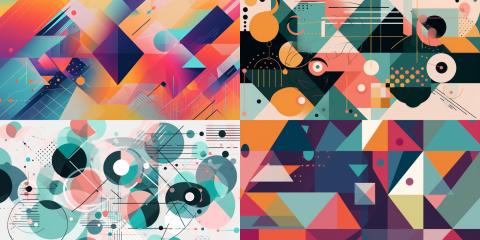Object detection serves as a crucial component within the fields of computer vision and machine learning, as it involves the identification and localization of objects within an image. One of the primary challenges faced when training an accurate object detection model is the acquisition of an extensive dataset that encompasses a diverse range of images. The collection and labeling of such datasets can prove both time-consuming and costly. Furthermore, the utilization of a limited dataset can lead to overfitting, which may ultimately compromise the model's accuracy when applied to unseen data. Consequently, it is of paramount importance to develop a robust model that can generalize effectively and consistently yield accurate results.
In this article, we explore an approach to augmenting and incorporating additional classes into object detection models through the use of domain transfer, a technique that holds the potential to significantly enhance the performance of object detection models, particularly when working with limited datasets.
Domain Transfer for Image Translation
Domain transfer can be discussed within the scope of image-to-image translation, a process aimed at transforming images from one domain to another while preserving the key attributes of the original image. For instance, this technique can be employed to convert images of daytime scenery to nighttime or to transform summer landscapes into winter ones. To further elucidate this concept, consider the following sets of input and output images.

We can interpret the domain transfer problem as a disentanglement challenge, wherein our objective is to distinguish between an image's style and content. The style pertains to an image's unique visual patterns and textures, while the content refers to the objects and features depicted within the image. By successfully disentangling style and content, we gain the ability to manipulate each independently before combining them to create a novel image. This process facilitates the generation of previously unseen images that retain the essential characteristics of the original.
The transformed images can subsequently be utilized as training data, which allows us to streamline the overall object detection process by maintaining a generic model while modifying the data. This technique proves particularly advantageous in cases involving limited data or exceedingly complex data unsuitable for direct training. By generating new data, we can enhance the size and diversity of our training set, ultimately improving the performance of our models.
Domain transfer techniques, such as CycleGAN or Pix2Pix, often necessitate paired images from the source and target domains. However, paired image translation methods require identical content for training, which may present a challenge. Obtaining identical image pairs can be a difficult endeavor, particularly when conditions vary. For example, a scene captured in the morning may differ significantly in content from the same scene photographed in the afternoon. This discrepancy complicates the acquisition of identical image pairs. Additionally, we may not always have access to identical image pairs or may lack the time or resources to generate supplemental data. As a result, researchers have been investigating alternative methods that do not demand paired data.
Contrastive learning approaches for unpaired image translation, such as the CUT algorithm, offer a promising alternative to paired image translation. The objective of the CUT algorithm is to match corresponding image patches from each style to the same location within a learned feature space. The framework promotes the mapping of two corresponding patches to a similar point in the feature space relative to other elements in the dataset, referred to as negatives. Both negative and positive samples are derived from the same image, which enables one-sided translation in unpaired image-to-image translation, improves quality, and reduces training time. By training on patches from an image rather than the entire image, we can achieve this domain transformation with as few as one image from the example style.

Augmenting Object Detection Models
To demonstrate the potential of domain transfer in enhancing object detection models, let's consider a case study. Imagine we are apple farmers who wish to automate the counting of our orchard's yield to estimate profits for the current year. We have trained a model to recognize and count individual apples in our orchards using Mask R-CNN.

Recently, our business has expanded to include growing oranges. However, we do not want to allocate additional resources for image collection and labeling. Fortunately, we can leverage domain transfer to add new classes to our model, thereby minimizing the image collection and labeling effort required.
To achieve this, we can utilize the apple2orange dataset, which comprises approximately 2,400 images of apples and oranges. By training our CUT algorithm using the apple images as content and the orange images as style, we can generate new images of oranges using an object detection dataset. We can then integrate these images into the Mask R-CNN dataset.

Below, we provide a few examples of transformed images. The scene itself remains largely unchanged, but apples are replaced with oranges.
Once we have transformed the images, we can reassign the "apple" label to the original images, incorporate the newly transformed images and their corresponding class into our dataset, and retrain the model. This enables us to successfully perform object detection on our new "orange" class.

Conclusion
Domain transfer is a powerful technique that can be employed to augment object detection models, playing a key role in achieving accurate results across a wide variety of conditions. By reducing the amount of data we need to collect for training, we can conserve time, money, and resources while still attaining a highly accurate and robust model. Domain transfer is a valuable tool that can significantly enhance the performance of object detection models, especially when working with limited datasets.



